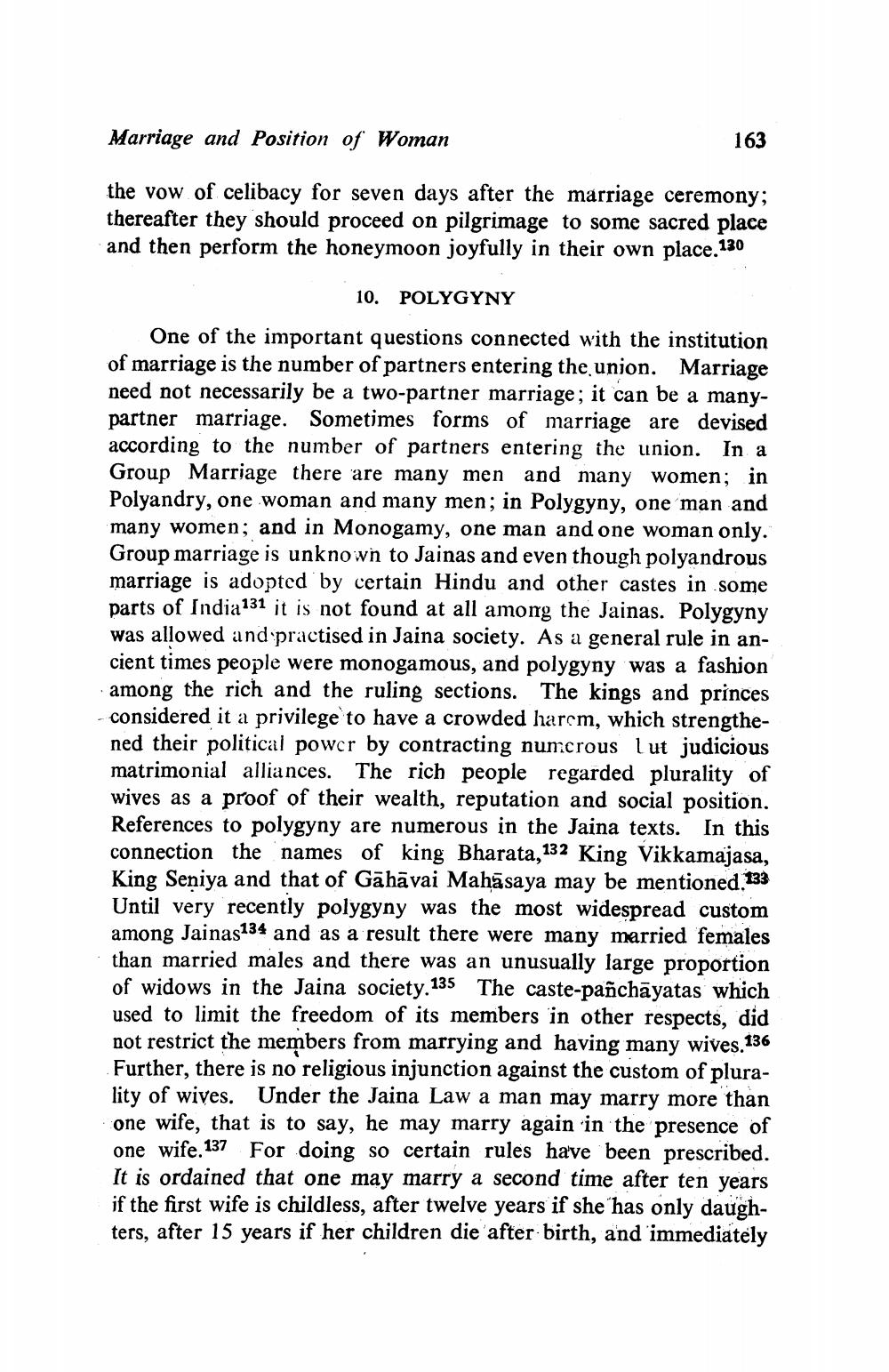________________
Marriage and Position of Woman
the vow of celibacy for seven days after the marriage ceremony; thereafter they should proceed on pilgrimage to some sacred place and then perform the honeymoon joyfully in their own place.130
10. POLYGYNY
163
One of the important questions connected with the institution of marriage is the number of partners entering the union. Marriage need not necessarily be a two-partner marriage; it can be a manypartner marriage. Sometimes forms of marriage are devised according to the number of partners entering the union. In a Group Marriage there are many men and many women; in Polyandry, one woman and many men; in Polygyny, one man and many women; and in Monogamy, one man and one woman only. Group marriage is unknown to Jainas and even though polyandrous marriage is adopted by certain Hindu and other castes in some parts of India131 it is not found at all among the Jainas. Polygyny was allowed and practised in Jaina society. As a general rule in ancient times people were monogamous, and polygyny was a fashion among the rich and the ruling sections. The kings and princes considered it a privilege to have a crowded harem, which strengthened their political power by contracting numerous lut judicious matrimonial alliances. The rich people regarded plurality of wives as a proof of their wealth, reputation and social position. References to polygyny are numerous in the Jaina texts. In this connection the names of king Bharata,132 King Vikkamajasa, King Seniya and that of Gahavai Mahāsaya may be mentioned.133 Until very recently polygyny was the most widespread custom among Jainas134 and as a result there were many married females than married males and there was an unusually large proportion of widows in the Jaina society.135 The caste-pañchayatas which used to limit the freedom of its members in other respects, did not restrict the members from marrying and having many wives.136 Further, there is no religious injunction against the custom of plurality of wives. Under the Jaina Law a man may marry more than one wife, that is to say, he may marry again in the presence of one wife. 137 For doing so certain rules have been prescribed. It is ordained that one may marry a second time after ten years if the first wife is childless, after twelve years if she has only daughters, after 15 years if her children die after birth, and immediately




